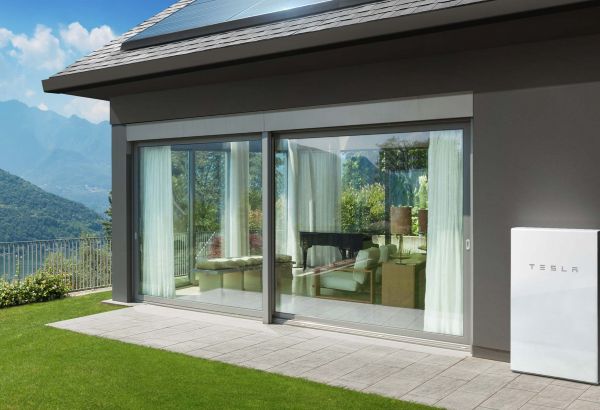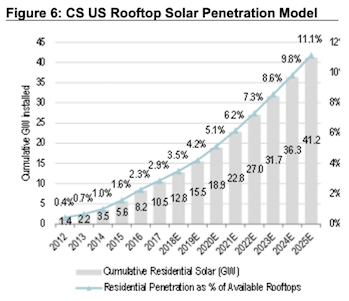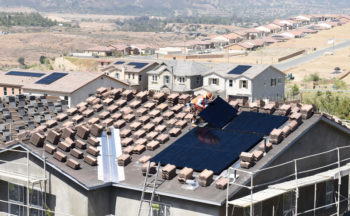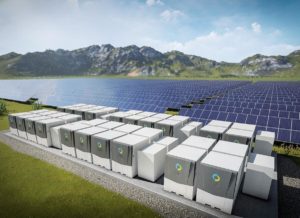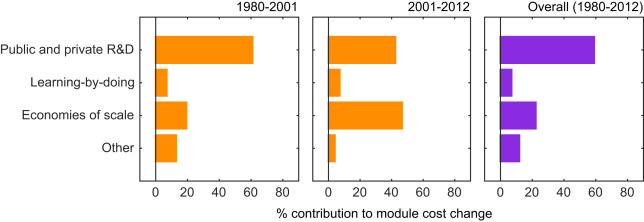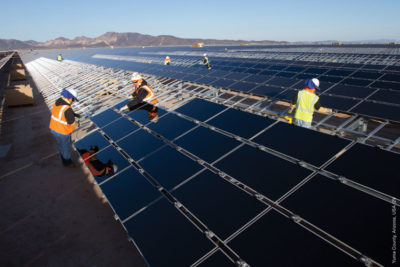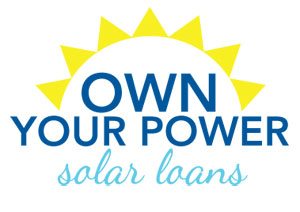The manufacturing of solar panels in the U.S. will see considerable growth by the end of 2019. Many foreign solar companies are choosing to set up shop in America to avoid paying costly tariffs.
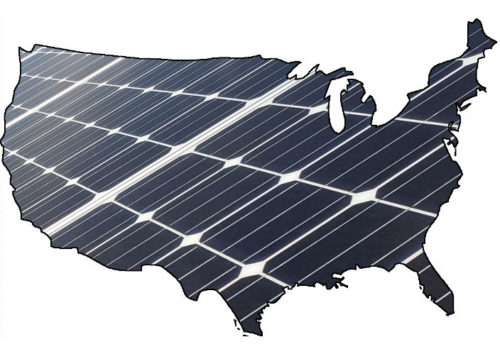
This story comes by way of a recent solar power world article.
Here’s a list of the companies that are expanding their operations in the U.S.;
- Hanwha Q Cells. This South Korean company will be constructing a 1.6 gigawatt solar panel manufacturing facility in Dalton, Georgia. Panel production is expected to begin just a few months into 2019.
- First Solar. This American based company is currently under construction on a 1.2 gigawatt factory in Perrysburg, Ohio. It’s an impressive 1 million sqft factory that is expected to be completed by the end of 2019. This is nearby their existing 600 megawatt facility.
- LG Solar USA. Another South Korean based company that is currently expanding into a 500 megawatt facility in Huntsville, Alabama. Hiring is underway and solar panels are expected to be produced by the end of the first quarter of 2019.
- JinkoSolar. With operations already setup in Jacksonville, Florida, this Chinese company will be off to a quick start with a 400 megawatt facility that is operational as of early 2019.
- Seraphim Solar USA. The company is expecting to finish their 340 megawatt factory in Jackson, Mississippi sometime in 2019. Based in China, the company produces about 4 gigawatt of solar panels per year with business in 40 countries.
- CSUN. Another Chinese based solar manufacturer. The company has yet to confirm an exact timeline for completion of there 200 megawatt facility in Sacramento, California.
- Mission Solar. This Texas based solar panel manufacturer is expected to add an additional 200 megawatt production capacity to their existing 200 megawatt plant in 2019. The factory is in San Antonio.
- Silfab. Based in Canada. This company is working on adding 200 megawatts of capacity to their existing factory in Bellingham, Washington, bringing its total to 400-500 megawatts by the end of 2019.
- SolarTech Universal. An American company based out of Riviera, Florida. The company expects to add an additional 200 megawatts to their 80 megawatt facility.
- SunPower. The American solar panel manufacturer has acquired Solarworld’s Hillsboro, Oregon, plant. The company expects to reach a 200 megawatt production capacity in 2019.
- Heliene. A Canadian outfit. This company is in the process of refurbishing a 140 megawatt facility in Mountain Iron, Minnesota.
- GreenBrilliance. This company has much experience producing solar panels in India. The company is expanding with a 120 megawatt factory in Baltimore, Maryland.
- SolSuntech. Headquartered in New York with R&D centered in South Korea, this new solar panel manufacturer is promising a 3D solar cell capable of being 33 percent efficient. They expect production to start at their 100 megawatt facility in Virginia by the end of 2019.
While the solar panel tariffs have made going solar more difficult in the U.S., it appears that both American and foreign solar panel manufacturers are continuing to invest in their solar businesses. The big picture is that the tariffs were a temporary setback and that all parties involved know that we are still in the beginning stages of what will prove to become a much larger industry.
More U.S. solar cell manufacturing will prove to be a win for both American and foreign companies alike.

